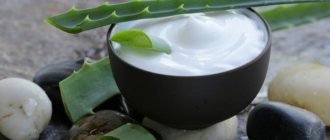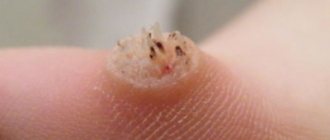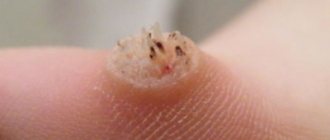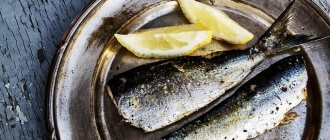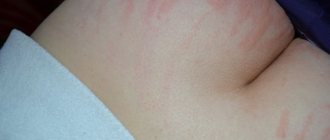Allergy to washing powder: why does it occur?
The main factor that provokes an allergy to powder is the inclusion of chemical compounds harmful to health in household chemicals. Let's find out which components in the powder potentially cause allergies?
- Phosphates. These compounds are included in most powders. They soften hard tap water, thereby increasing foaming and improving the washing properties of the powder. However, phosphates are the strongest allergens: they tend to accumulate in the fibers of matter, which leads to allergies. They also have a negative impact on the environment: phosphates enter water bodies along with insufficiently treated waste water and lead to the formation of blue-green algae.
- Zeolites. In the early 80s, many powder manufacturers abandoned phosphates, replacing them with zeolites, since at that time it was believed that zeolites were less harmful. However, over time it became clear that they are also not biodegradable and can lead to allergies, and when they get into water bodies, they lead to the death of fry.
- Surfactants (surfactants). They are included in detergents and cleaning products, as these substances help remove grease stains and other contaminants. However, most of these compounds are dangerous not only to human health, but also to the environment. The exception is non-ionic surfactants, which are completely biodegradable. The accumulation of surfactants in the body leads not only to allergies, but also to dysfunction of the liver, heart and brain. The content of surfactants in a relatively safe powder should be no more than 5% - this is enough to cope with stains, but not enough to negatively cause allergies.
- Dyes and flavors. To give powders a pleasant smell and color, manufacturers actively use fragrances, dyes and flavors of inorganic origin, which cause allergies to the powder.
- Chlorine. Despite the enhanced washing and cleaning properties of the powder, which occurs due to the chlorine content in it, this chemical element is hazardous to health. The high chlorine content in the powder leads to problems with the bronchopulmonary system, which leads to the gradual occurrence of allergies.
- Optical brighteners. These chemical compounds are luminescent dyes that give things an illusory whiteness. In fact, their particles simply settle on the fabric and reflect the light falling on them. As a result, things appear snow-white. However, you need to remember that optical brighteners are practically impossible to rinse out, which can lead to allergies.
All of these chemical compounds are difficult to rinse, which is why their microscopic particles almost always remain on the laundry. Typically, it may take up to 8-10 rinses to completely remove them from fabric fibers. The presence of residual particles on the surface of bedding and clothing causes chemicals to come into contact with the skin. This can not only lead to allergic reactions and irritation of the skin, but can also have more dangerous consequences. Harmful chemical compounds enter through the skin into capillaries located close to its surface and are carried through the bloodstream to all organs and tissues. Over time, they accumulate, which can lead to disruption of the normal functioning of body systems.
Recommendations and treatment
At the first signs of an allergy, you should consult a doctor and strictly follow his instructions.
The doctor’s very first recommendation is to eliminate or reduce contact with the allergen.
In order to minimize the possible allergic consequences of using household chemicals, you must follow simple precautions:
- When cleaning, use household chemicals only when necessary.
- Buy household chemicals labeled “hypoallergenic”, “for sensitive skin”, “for washing children’s clothes”. Although in this case the allergy cannot be completely avoided, its manifestations will be minimal. It is recommended to use products in which the proportion of surfactants does not exceed 5%.
- Work with household chemicals only with gloves, use protective hand cream.
- After using chemicals, be sure to ventilate the room and thoroughly wash your hands and eyes.
- Avoid hand washing with powder - use soap instead.
- Machine wash on an extra rinse cycle.
- Better use gels instead of powders and aerosols. This will prevent allergen dust particles from entering the respiratory tract.
- Ventilate your home more often, not allowing chemical vapors from the household chemicals you use to stagnate in the air.
If even when using “hypoallergenic” household chemicals, symptoms of an allergy to chemicals still persist, you should remember well-forgotten natural remedies:
- lemon juice - removes rust, scale, is used when washing windows and to remove stains from clothes, porcelain and cutlery;
- table vinegar - removes scale, stains, disinfects, cleans tiles;
- salt - used for washing dishes, cleaning the soleplate of the iron;
- mustard - used for washing woolen items;
- baking soda - used for washing dishes and removing stains from furniture upholstery.
How are allergies to chemicals treated?
To relieve allergy symptoms, your doctor may prescribe antihistamines (for example, Cetrin ® ). In the future, it is advisable to keep these medications on hand - unfortunately, the allergic reaction may recur.
To treat local skin manifestations, the doctor may recommend external ointments or creams containing glucocorticosteroids, as well as skin softening substances. For respiratory manifestations of allergies, topical glucocorticosteroids, cromones, and bronchospasmolytics can be added to the treatment regimen.
Following these recommendations and following your doctor’s orders will help you significantly reduce your symptoms or completely get rid of allergies to household chemicals.
What does an allergy to powder look like and manifest itself?
- If you wash by hand, your hands and palms may become covered with small, weeping erosions.
- Allergic redness and rashes appear on the skin throughout the body.
- There is severe itching of the skin.
- Asthmatics and people with problems with the functioning of the bronchopulmonary system may experience severe coughing and difficulty breathing.
- Possible headache, dizziness, weakness.
- Sometimes there are cases of allergic rhinitis and increased lacrimation.
If you notice these symptoms, you need to contact an allergist. The doctor will conduct appropriate tests and prescribe treatment. Usually, in order to cope with allergies to washing powder, external antihistamines are prescribed. If weeping erosions and cracks occur, antiseptic and wound-healing ointments and creams are prescribed.
Symptoms and signs
How does an allergy to washing powder manifest in children? Symptoms of the disease include:
- severe itching and rash after the child puts on clean clothes;
- swelling of the respiratory tract, cough. Particles of powder may remain on the fabric of clothing. By inhaling them, allergens enter the child’s body. They cause severe swelling and shortness of breath;
- weakness, drowsiness;
- tearfulness and irritability;
- nausea, dizziness.
Allergists identify several signs of allergies. These include frequent sneezing and nasal congestion.
If a child puts on clean clothes and after some time begins to sneeze frequently, this is a sure sign of an allergy.
What does a child's allergy to powder look like? Photo :
You can learn about the causes and symptoms of allergies to washing powder from this video:
Children can be cured with medications and folk remedies. To do this, you need to carefully read the instructions for use.
Read about the symptoms and treatment of gluten allergy in infants here.
First of all, the child needs to take medications that eliminate itching, swelling and rash. These include:
Take medications, half a tablet twice a day.
You should not use the above drugs for more than five days.
If a child has nasal congestion or a runny nose, use Naphthyzin or Galazolin drops.
It is enough to bury them in the nose in the morning and evening. The allergic reaction will disappear in 3-5 days.
Painful areas of the skin are treated with ointments:
The products should be applied to damaged areas of the skin twice a day.
Within 2-3 days the result will be noticeable: the rash will practically disappear, the skin will stop itching. The child’s well-being will improve significantly.
Folk remedies
It is recommended to use compresses made from calendula tincture to treat the rash. To do this, mix a glass of boiling water and a large spoon of chopped herbs. It is infused for at least thirty minutes, then filtered. The finished medicine is used in the form of compresses. A cotton pad is dipped into the solution, then it is applied to painful areas of the skin for ten minutes. Then the cotton pad is removed and the skin is lightly wiped with a napkin. The procedure must be carried out twice a day. The infusion from the series will restore the child’s strength and help him recover. To do this, dissolve a large spoonful of chopped herbs in a glass of boiling water. The components must be thoroughly mixed, the solution is infused for at least an hour, then filtered. You should take the medicine 1/3 cup twice a day before meals. Ice will relieve itching and inflammation of the skin. To do this, wrap a small ice cube in a napkin and apply it to the painful area for a minute. Next, you need to take a break for five minutes, then apply ice to the damaged area again for a minute.
It is very important to cool the skin only slightly. There is no need to apply ice for too long, otherwise the procedure will cause complications.
Cold relieves burning and itching and helps heal the epidermis.
Allergy to powder in a child
An allergy to powder in an infant can cause especially big trouble for parents and the baby himself.
Due to the not fully formed children's immune system and delicate skin, exposure to the powder can cause severe irritation with dryness, redness and itching. You can prevent the appearance and development of allergies to powder in newborns if you wash their clothes exclusively with organic products or special baby soap. But you shouldn’t completely trust the “non-allergenic” or “for children” labels that many manufacturers supply their powders with: it’s better to study the composition yourself to make sure there are no phosphate compounds or surfactants.
Composition, chemistry and allergens
Washing powder contains many different components, many of which are potential allergens.
The composition varies depending on the manufacturer and type of powder. Hand wash products are generally safer for your skin.
The main components from which washing powders are made:
They serve to soften water, but are very toxic. We come into contact with them every day, because phosphate compounds are found in medications, fertilizers, various household chemicals, and even in some food additives.
These compounds may contain poisons (arsenic) and metals (lead), the amount of which is limited by certain recommended standards. It is unlikely that regulatory authorities meticulously check each of the powders sold to ensure that these components exceed the norm.
However, phosphates penetrate into our body not only from the powder, and harmful substances can accumulate, therefore, the less chemicals there are, at least in the powder, the better.
Phosphate compounds are very difficult to wash off and may well cause allergic reactions in both children and adults.
The most dangerous component, especially for allergy sufferers. They are the basis of inexpensive powders and are necessary to reduce the surface tension of materials.
These substances are also found in many cleaning products - for washing dishes, floors, and so on.
Most surfactants are sulfonates and sulfates, which are harmful in direct contact with the skin. During the washing process, they interact with water and mostly dissolve, but not completely.
There are surfactants derived from corn, coconut and sugar cane - they are safe for the skin and are used in expensive natural powders.
Chemical compounds accumulate well in the fabrics of clothing and bedding, remaining there for several days.
Both phosphates and surfactants cause damage to the body by changing the composition of the blood. These changes can manifest themselves in the long term in the form of cancer or a simple weakening of the immune system, which contributes to the development of allergies.
As a rule, these are chlorine and similar compounds, or peroxides. They decompose organic contaminants and discolor them.
These substances are toxic and have the ability to disinfect fabric.
Special enzymes that serve to decompose proteins, keratin, starch and fats. Remove food debris and other organic compounds and particles.
They consist of lipase, protease, cellulase, amylase, etc. They have a protein structure and may well cause allergic reactions.
Pigments serve to preserve and restore the color of things. Flavorings add a pleasant aroma. Both of them can be strong allergens.
In addition to the substances listed above, washing powder also contains many different chemicals for softening water, suppressing foam, strengthening the main components, making clothes soft, etc.
After washing, microscopic chemical particles linger in the things we wear every day and penetrate our bodies.
They are the most dangerous for infants and newborns, because their immunity and delicate skin are not yet able to prevent the effects of chemicals.
For reference: Ushasty Nyan powder, which in theory should be safe for children, contains phosphates and anionic surfactants in large quantities. Studies have shown that its toxicity level is much higher than acceptable for children.
Allergies to washing powder manifest themselves in different ways, depending on the place of contact and the method of penetration of the allergen into the body.
But all the signs are similar in both children and adults.
On the skin it looks like allergic contact dermatitis (example in the photo):
- redness and small rashes, pimples, small blisters or nodules;
- dryness, flaking and itching;
- swelling;
- complications may develop in the form of weeping eczema.
If the powder gets into the nasal mucosa and respiratory tract, allergic rhinitis, lacrimation and redness of the eyes, dry cough, bronchospasms and exacerbation of asthma may appear.
A small child, due to his curiosity, can taste the washing powder if access to it is not limited in any way. In addition to allergies, this threatens poisoning with the corresponding symptoms: vomiting, diarrhea, fever.
Non-allergenic powder
Some powder manufacturers position their products as non-allergenic. However, you should not always believe advertising unconditionally. You must figure out for yourself what properties a washing powder that does not cause allergies should have, and what components should not be in its composition. In this case, you will definitely be able to buy a suitable safe product.
Avoid products whose packaging cannot read the ingredients. Many powder manufacturers deliberately indicate the list of ingredients in such small print that the buyer is simply unable to read the composition.
A high-quality powder that does not cause allergic reactions should not contain anionic surfactants. The same applies to phosphate compounds, optical brighteners and chlorine.
Buy laundry detergents that do not have a strong scent. The more fragrances and fragrances there are in the powder, the higher the likelihood of an allergy to it.
It is better to purchase washing powders not in supermarkets or markets, but in specialized stores of organic products. The products they contain have an appropriate quality certificate and do not cause allergies.
Reviews
According to parents' reviews, "Eared Nanny" provokes an allergic reaction in almost 60% of cases of contact with children's skin. But parents generally respond positively to the “Ladushki” and “Umka” washing powders.
As for “adult” powders, the anti-rating leaders are “Tide” and “Myth”. They are indeed very toxic, which is clear if you read the composition on the package. User reviews indicate a strong and pungent odor that remains on washed clothes. When washing, my head starts to hurt, I want to sneeze, and skin irritation does not go away for weeks.
Also included in the anti-rating were capsules "Ariel", "Biolan color automatic", "Pemos Oxygen Crystals", "Clean'OK", "BiMax color automatic", "Dosia". Many users claim that they are not allergic to the usual, cheapest powders without additives, but they are allergic to the above.
Some complain that they are allergic even to the hypoallergenic composition. This is possible if you exceed the dosage specified in the instructions.
Alternative washing: what to wash things with instead of powder?
Allergies to washing powder in children and adults can be avoided by avoiding the use of most products sold in supermarkets. If you do not have the opportunity to buy organic powders that do not cause allergies, you can use the following during washing:
- Shavings of laundry soap. If you plan to wash light-colored items, you will need to add baking soda to the shavings.
- Soap root (soapwort). Safe detergent for washing wool and silk items.
- Soap nuts. Suitable for washing clothes made of any materials.
- Beans. The bean broth foams well and washes the wool.
- Mustard powder. Crushed mustard is well suited for washing woolen and silk items, as well as synthetics.
- Table salt. Effectively removes stains from chintz and linen.
Prevention
To minimize the negative effects of substances in washing powder, it is advisable to follow the following recommendations:
- hand wash - only with rubber gloves;
- do not exceed the recommended doses of powder when washing;
- Items must be thoroughly rinsed after washing;
- the powder, like other household chemicals, should be stored in airtight packaging;
- It is advisable to use hypoallergenic laundry detergents.
- use of phosphate-free products (Frosh, Milis, Burti, etc.);
An allergic reaction is individual in nature and is caused by sensitivity to the components of the detergent. When choosing a powder, special attention should be paid to those products that are intended for washing children's clothes.
La-Cri products are an assistant in the fight against dry skin and allergies to powder
Depending on the nature of the symptoms of an allergy to the powder, you can use both restorative and intensive La-Cri creams. In the presence of allergic redness and itching, a restorative cream is recommended: the natural extracts and oils included in its composition provide an excellent antipruritic effect, they soften the skin and relieve redness.
If there is severe peeling and dryness of the skin, it is better to give preference to an intensive cream for very dry skin. Lecithin and allantoin, wheat germ oils, jojoba and shea butter, as well as chamomile, violet and licorice extracts effectively moisturize, nourish and tone skin areas damaged by powder allergies.
Diagnostics
Only a specialist, namely a dermatologist, can accurately diagnose the disease. He takes a medical history to get a clearer picture of the disease. He also prescribes medications to relieve allergy symptoms.
When symptoms occur, an allergist will usually prescribe a patch test to identify the allergen. This test is called a patch test. It consists in the fact that the patient needs to wear special patches that are treated with suspected allergens. The patches are attached to the back between the shoulder blades. They must be worn for at least 24 hours.
If, as a result, redness of more than 3 millimeters in diameter appears on the skin, this means that the substance is an allergen. After the test, appropriate treatment is also prescribed.
Clinical researches
The effectiveness, safety and tolerability of La-Cri products have been clinically proven. The products are recommended by the Union of Pediatricians of Russia. During clinical studies, specialists were able to record impressive results.
Cream "La-Cri" for dry skin:
- eliminates dryness and flaking;
- retains the skin's own moisture;
- protects skin from wind and cold.
Sources:
- Schneiderman Paul, Grossman Mark, Differential diagnosis in dermatology. Atlas, Binom, 2022.
- Reken Martin, Schaller Martin, Sattler Elke, Burgdorf Walter, Atlas of Dermatology, MEDpress-inform, 2022.
- Yagodka Valentina Stepanovna, Medicinal plants in dermatology and cosmetology, Naukova Dumka publishing house, 1991.
Food allergies
Hives and facial swelling are the most common symptoms of food allergies. Hives appear as raised pink bumps with pale centers, similar to insect bites. Other symptoms include itching and swelling in the mouth, runny nose and cough, vomiting and diarrhea. Life-threatening allergic reactions may also include difficulty breathing and/or swallowing. The medical name for this phenomenon is anaphylaxis. Most of these reactions occur suddenly within 10-20 minutes. All this happens within 2 hours after eating a certain food containing allergens.
Main causes of food allergies
8 foods cause 9 out of 10 food allergies.
In the first year of a child's life: cow's milk, soy milk and egg.
Older children: peanuts, tree nuts, fish, seafood and wheat.
Seafood includes shrimp, crab, lobster, clams, oysters and scallops.
Tree nuts include all nuts (such as almonds and cashews) except peanuts. Peanuts and tree nuts are the most common triggers for severe reactions.
Of children with a proven food allergy, 40% have severe reactions. The remaining 60% have a mild reaction.
Still have questions?
Get an online consultation from leading allergists in St. Petersburg!
A professional and experienced pediatrician will answer your questions.
Medical care for a child without leaving home at a convenient time.
sign up for a consultation
A Skype consultation lasts 45 minutes.
